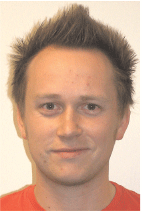Normal fault growth and segment linkage in a gravitationally detached delta system: evidence from 3D seismic reflection data from the Ceduna Sub-basin, Great Australian Bight
Alexander Robson A , Rosalind King B and Simon Holford CA The University of Adelaide.
B School of Earth and Environmental Sciences, The University of Adelaide.
C Australian School of Petroleum, The University of Adelaide.
The APPEA Journal 55(2) 467-467 https://doi.org/10.1071/AJ14102
Published: 2015
Abstract
The authors used three-dimensional (3D) seismic reflection data from the central Ceduna Sub-Basin, Australia, to establish the structural evolution of a linked normal fault assemblage at the extensional top of a gravitationally driven delta system.
The fault assemblage presented is decoupled at the base of a marine mud from the late Albian age. Strike-linkage has created a northwest–southeast oriented assemblage of normal fault segments and dip-linkage through Santonian strata, which connects a post-Santonian normal fault system to a Cenomanian-Santonian listric fault system.
Cenomanian-Santonian fault growth is on the kilometre scale and builds an underlying structural grain, defining the geometry of the post-Santonian fault system.
A fault plane dip-angle model has been created and established through simplistic depth conversion. This converts throw into fault plane dip-slip displacement, incorporating increasing heave of a listric fault and decreasing in dip-angle with depth. The analysis constrains fault growth into six evolutionary stages:
early Cenomanian nucleation and radial growth of isolated fault segments;
linkage of fault segments by the latest Cenomanian;
latest Santonian Cessation of fault growth;
erosion and heavy incision during the continental break-up of Australia and Antarctica (c. 83 Ma);
vertically independent nucleation of the post-Santonian fault segments with rapid length establishment before significant displacement accumulation; and,
continued displacement into the Cenozoic.
The structural evolution of this fault system is compatible with the isolated fault model and segmented coherent fault model, indicating that these fault growth models do not need to be mutually exclusive to the growth of normal fault assemblages.

Alexander Robson achieved a first class honours degree from the Australian School of Petroleum, University of Adelaide in 2013. He then represented the Australian School of Petroleum in the 2013–2014 AAPG Imperial Barrel Award and won the Asia Pacific regional competition and represented the Asia Pacific at the final in Houston, Texas. Alex is now a PhD candidate at the University of Adelaide, under the supervision of Rosalind King and Simon Holford. He is a recipient of the ASEG post-graduate research scholarship and is now researching the structural evolution of Australia’s extensional settings, including the frontier and prospective Bight Basin and deep-water Otway Basin. Member: AAPG, ASEG. |

Rosalind King completed her BSc (Hons) and PhD at the University of Liverpool in 2001 and 2005, respectively. Her PhD research involved investigation of the structural evolution in the Cape Fold Belt, South Africa. She worked as a post-doctoral researcher at the Australian School of Petroleum (University of Adelaide) from 2005 to 2010, studying the present-day stresses of northwest Borneo and delta-deepwater fold-thrust belts. Rosalind is a senior lecturer in the School of Physical Sciences (University of Adelaide) and her research includes the tectonics of deepwater fold-thrust belts, detachments, fold and thrust mechanics, petroleum geomechanics and fracture systems. |

Simon Holford is a senior lecturer at the Australian School of Petroleum, University of Adelaide, where he is co-leader of the Stress, Structure and Seismic Research Group. Simon has published around 50 papers and has received more than $2 million in research funding. His research interests encompass the formation and evolution of rifted margins, quantifying uplift, subsidence, structural permeability and contemporary stresses in the sedimentary basins, and the impacts of magmatic activity on petroleum systems. Simon has won numerous awards, including the 2012 APPEA Best Paper Award. He has a first class honours degree from Keele University and a PhD from the University of Birmingham. He is the incoming president of the SA/NT branch of PESA. Member: AAPG, AGU, GSA, GSL, PESA and PESGB. |
References
Childs, C., Nicol, A., Walsh, J.J., and Watterson, J. (2003). The growth and propagation of synsedimentary faults. Journal of Structural Geology 25, 633–648.Dutton, D.M., and Trudgill, B.D. (2009). Four dimensional analysis of the Sembo relay system, offshore Angola: Implications for fault growth in salt-detached settings. AAPG bulletin 93, 763–94.
Jackson, C.A.L., and Rotevatn, A. (2013). 3D seismic analysis of the structure and evolution of a salt-influenced normal fault zone: A test of competing fault growth models. Journal of Structural Geology 54, 215–34.
Mansfield, C.S., and Cartwright, J.A. (1996). High resolution fault displacement mapping from three-dimensional seismic data: evidence for dip linkage during fault growth. Journal of Structural Geology 18, 249–63.
Macdonald, J.D., King, R.C., Hills, R.R., and Backé, G. (2010). Structural Style of the White Pointer and Hammerhead Delta—Deepwater Fold-Thrust Belts, Bight Basin, Australia. APPEA Journal 50, 487–510.
Totterdell, J.M., Blevin, J.E., Struckmeyer, H.I.M., Bradshaw, B.E., Colwell, J.B., and Kennard, J.M. (2000). Petroleum frontiers, systems and plays-A new sequence framework for the Great Australian Bight: Starting with a clean slate. APPEA Journal 40, 95–120.
Totterdell, J. M., and Bradshaw, B. E., 2004—The structural framework and tectonic evolution of the Bight Basin. In: Boult, P.J., Johns, D.R., and Lang, S.C. (eds.). Eastern Australasian Basins Symposium II, PESA, Special Publication, 41—61.
Trudgill, B., and Cartwright, J. (1994). Relay-ramp forms and normal-fault linkages, Canyonlands National Park, Utah. Geological Society of America Bulletin 106, 1,143–57.
Walsh, J.J., and Watterson, J. (1988). Analysis of the relationship between displacements and dimensions of faults. Journal of Structural Geology 10, 239–47.
Walsh, J.J., Nicol, A., and Childs, C. (2002). An alternative model for the growth of faults. Journal of Structural Geology 24, 1,669–75.
Walsh, J.J., Bailey, W.R., Childs, C., Nicol, A., and Bonson, C.G. (2003). Formation of segmented normal faults: a 3-D perspective. Journal of Structural Geology 25, 1,251–62.


